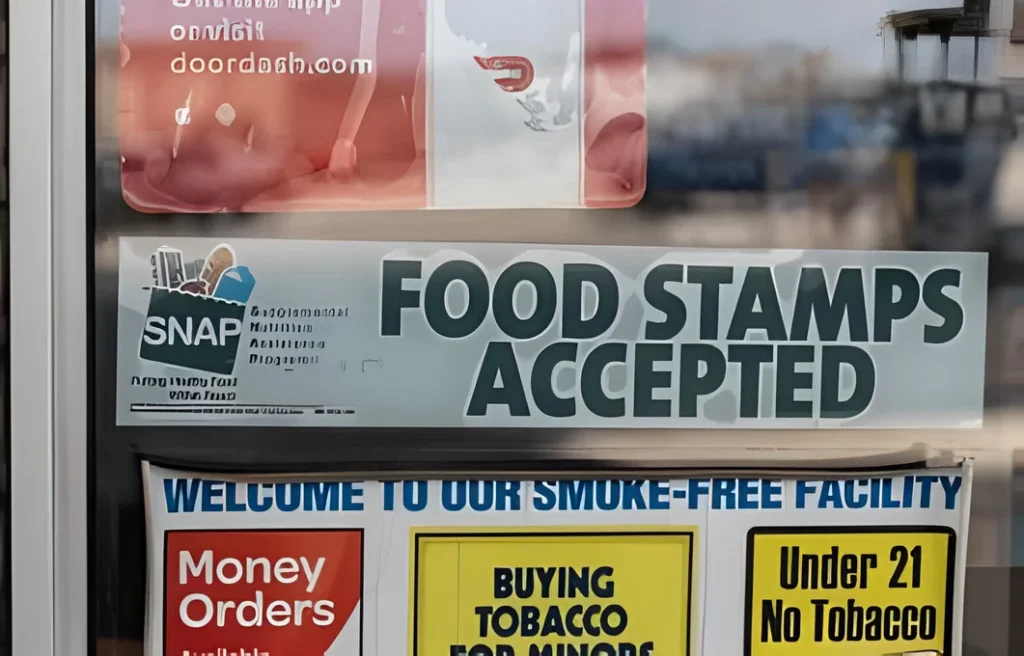Facing a scenario of many Financial Hardship Programs provides a glimmer of hope. Imagine this: you’re working hard to stay afloat when an unexpected $5,000 medical emergency strikes. Your savings fall short, overwhelming you with hospital bills and missed work. As you struggle to keep up, the looming threat of eviction adds to your worries. Are you feeling desperate for assistance? Where do you even start? This is the reality of “hardship”.
A situation that forces you to search for ways to afford the essentials. Fret not! Financial Hardship Programs emerge as beacons of support, helping those facing challenges in times of darkness. These programs, whether from the government, community organizations, or employers, aim to assist individuals like yourself during setbacks. Through these avenues of support, you can find guidance and relief in difficult times.
Alright, take a moment to relax. We’ll explore the support options to help you through tough financial times.

When Life Throws Curveballs: Understanding Financial Hardship
Financial hardship involves lacking enough income or liquid assets to reasonably pay for essential living expenses – food, housing, utilities, medical care, etc – due to extenuating personal loss or widespread economic distress.
Triggers typically include:
- Job loss
- Major illness or injury
- Divorce/separation
- Death in the family
- Natural disasters
- Declared states of emergency
In these cases, government, community, employer, and non-profit programs kick in nationwide to provide temporary relief until people regain stable financial footing.
A Glimpse Into the Maze: Different Types of Financial Hardship Programs
If faced with proven inability to cover basic needs, various assistance channels exist to fill monetary gaps, including:
Government Assistance Programs
Federal and state governments administer multiple programs serving Americans facing verifiable cash shortages, unemployment, food insecurity, and medical needs. While requirements and benefits differ, key options include:

SNAP – Provides month-to-month grocery stipends through Electronic Benefits Transfer (EBT) playing cards to supplement food budgets for qualifying low-income households.
TANF – Delivers short-term monetary assistance to families with children already receiving authorities’ blessings (like SNAP or Medicaid) who exhibit want due to process loss, damage, or other established reasons.
Medicaid – Offers loose or low-value public medical insurance to kids and adults with incomes beneath kingdom-set poverty tiers. Government-subsidized private insurers cover Recipients for doctor visits, health center trips, prescription medicinal drugs, and more.
Federal Child Care Assistance: The Child Care and Development Block Grant (CCDBG) subsidizes eligible families for childcare costs. States manage CCDBG programs, so eligibility criteria and program details vary.
Detailed eligibility criteria for these and supplementary federal and state-level assistance programs can be found at Benefits.gov and specific government agency websites like HHS.gov, USDA.gov, and Medicaid.gov.
Non-Profit and Community Support
Beyond government channels, privately funded non-profit organizations and charities deliver vital emergency assistance to community members facing financial challenges. This includes:
Food Banks – Regional food banks distributed through community soup kitchens, shelters, schools, and pantries help supplement grocery needs.
Emergency Rental & Utility Assistance – Helps cover housing and utility costs through one-time grants or longer-term subsidies. Aid duration ranges from 30 days up to 24 months.
Community Healthcare Centers – Offer free or sliding-scale medical, dental, and mental healthcare based on income eligibility.
Transitional Housing – Provides free temporary room & board for homeless families and individuals working toward self-sufficiency.
The National Council for Aging Care website can connect those in need to local non-profits that offer specific aid programs. Dialing 211 also helps locate community resources and assistance in most regions.
Employer-Sponsored Programs
Some companies recognize even the most responsible employees can encounter financial crises through minor faults of their own. Toward retaining talent, they administer assistance funds such as:
Hardship Loans – HR departments facilitate access to no-interest loans up to $1,500 for short-term emergency needs – with repayment automatically deducted from paychecks.
GRACE Grants – Grant programs pay one-time costs for unexpected emergencies. Grants up to $2,000 get approved based on tenure, position, and circumstance.
If employed, check whether your workplace offers formal channels for requesting monetary support during personal financial challenges.
Financial Hardship Programs: Tips for Applying and Getting Help
Familiarizing yourself with eligibility requirements, gathering needed documents to prove income and extenuating circumstances, and submitting comprehensive applications constitute essential first steps to accessing the beneficial financial hardship programs covered by government agencies, non-profits, community groups, and employers.
Gather Information
- Verify program criteria like income thresholds and qualifying event triggers in advance
- Compile pay stubs, tax returns, and lease agreements showing financial specifics
- Get doctors’ notes, police reports, or other evidence of mitigating circumstances incurring hardship
- Consult eligibility calculators to confirm the likelihood of approval
Apply Strategically
- Submit applications to every feasible program you or your family members qualify for
- Ensure accuracy, honesty, and completeness throughout all paperwork
- Follow up diligently on pending requests
- Appeal any denied applications by reconfirming eligibility and need
Seek Support
- Call 211 helplines to get connected with local financial counseling
- Contact legal aid groups for assistance navigating appeals
- Dial government hotlines to inquire about ombudsperson services for resolving unfairly denied claims
Remember, programs exist specifically to help regular people struggling through no fault of their own. So set ego aside and pursue potential lifelines!
Beyond the Maze: Building Financial Resilience for the Future
While temporary assistance can help you get through the current crisis, also adopt long-term strategies to grow more financially resilient, including:
Budgeting and Financial Planning
- Reduce unnecessary expenses to start building emergency savings
- Track income and spending patterns to strategically cover fixed and variable costs
- Explore resources like BudgetPulse for money management education and budget-forming tools
- Learn how to create a financial plan you can stick to!
Building Credit
- Demonstrate responsibility by consistently paying bills and debts on time
- Keep credit card balances low and credit utilization under 30%
- Check credit reports regularly and dispute any errors with bureaus
- Read up on how to build credit from scratch if needed
Staying Informed
- Follow government and community affairs to stay on top of program changes, cost-of-living, and broader economic conditions affecting household budgets.
- Contact representatives to advocate for social resources and policies that alleviate financial hardship for all
- Consider getting involved with or donating to non-profits fighting poverty, hunger, inadequate healthcare, and societal inequality.
Arming yourself with savvy plus accessing every available resource can help you power through current roadblocks and construct durable financial health over the long run. You are not alone – help awaits!
Conclusion: You’re Not Alone – Finding Your Way Out of Financial Hardship
During stressful times when you lack enough income to reliably cover the basics from food to rent due to job loss, illness, or other emergency causes – understand that assistance options exist! Federal, state, community, employer, and non-profit programs deliver temporary aid, loans, and in-kind support to qualifying individuals and families financially derailed through minor fault but actively working toward recovery.
Use guides like this one to educate yourself on available financial hardship programs. Reach out to services that can help you apply, provide advice, lower associated stresses, and get you and your family back on track. With help, perseverance, and planning, lifelines can pull you through present circumstances, while intelligent money management empowers you to stand firm should future curveballs come your way. You are not alone, and brighter days lie ahead!
Disclaimers: While this article provides a general overview of financial hardship programs, specific program details like eligibility criteria and benefits may vary depending on location, income level, and other factors. To ensure accuracy, please verify details on official government websites (.gov) or by contacting the program directly. Additionally, the mentioned amounts for hardship loans and grants might not be universally applicable. It’s recommended to check with your employer for specific program details.
Financial Hardship Resources
[ Important links: Benefits.gov, National Council on Aging Care, Federal Student Aid Hardship Programs, ]
What are some everyday situations considered financial hardship?
Financial hardship situations involve unexpected events that leave you unable to afford essential living expenses like food, housing, utilities, or medical care. These events could be:
Job loss
Major illness or injury
Divorce or separation
Death in the family
Natural disasters
Declared states of emergency
How do I find out what financial hardship programs I qualify for?
You can use online resources like Benefits.gov, government agency websites, and the National Council for Aging Care website to explore various programs and their eligibility criteria. You can also call 211 to connect with local community resources and receive guidance on applying for assistance.
What documents do I typically need to apply for financial hardship programs?
The specific documents required will vary depending on the program. Still, generally, you’ll need proof of income, identification, documentation of the hardship event (e.g., medical bills, job loss documentation), and residency documents.
What can I do if my application for assistance gets denied?
If your application for financial hardship programs is denied, review the reason for denial and ensure you meet all eligibility criteria. You can appeal the decision by providing additional documentation or evidence supporting your need. Additionally, consider seeking legal aid or contacting government hotlines to inquire about ombudsperson services that can help resolve unfairly denied claims.

